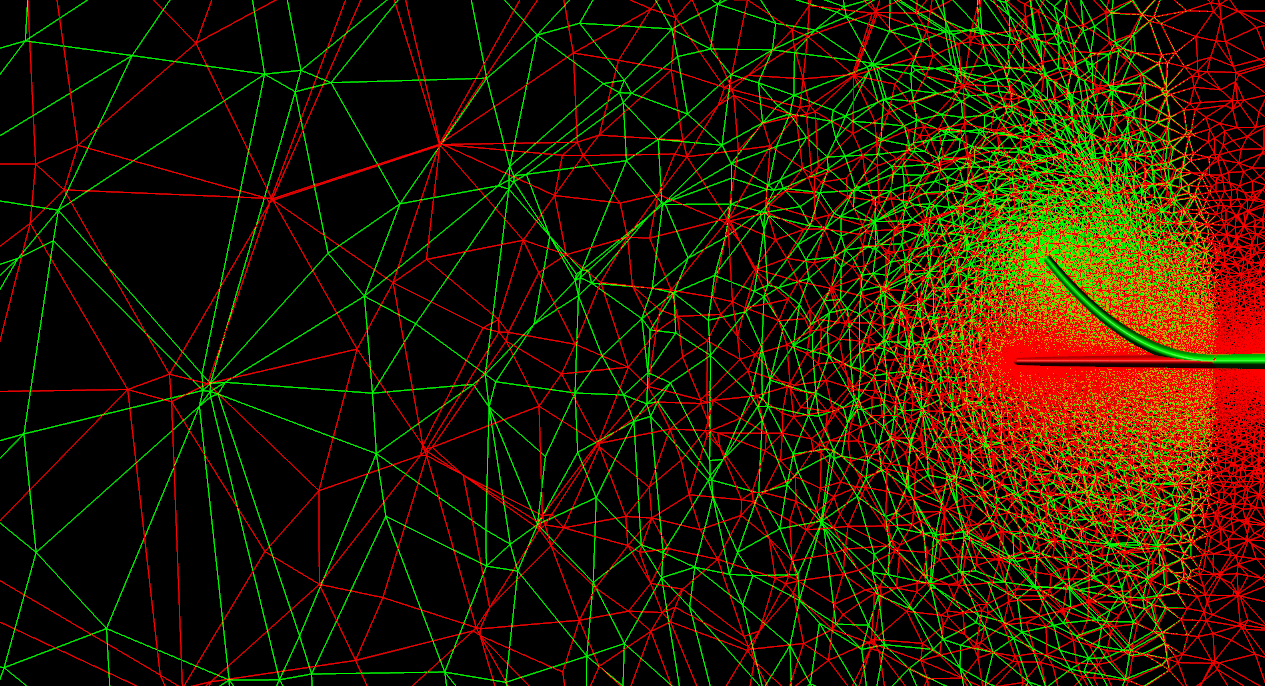For the last several months, I’ve been working on an algorithm to increase the amount of bending my grid deformer can handle before the grid becomes invalid. I’m finally to the point where I believe I have a reliable algorithm that unfolds folded faces resulting from grid deformation. For this article, I will focus on bending only. I will show the increased bending limit for both the Onera M6 wing and the F-18C vertical tail shown previously in “Bob’s Research Corner: Grid Def – Bending”.
 Prior to the unfolding folded faces algorithm, the maximum tip deflection I could obtain on the Onera M6 wing was 9.25% of the span. Now, I can achieve 57.83% wing tip deflection before the grid becomes invalid. The image to the left shows the original grid (red), previous maximum bending (blue) and new maximum bending (green). I think I can safely say that this is greater bending then one would see in a real world simulation. The animation below shows the bending of the wing over 25 time-steps. A comparison of the original (red) and deformed grid (green) at several zoom levels is presented in the slide-show below the animation.
Prior to the unfolding folded faces algorithm, the maximum tip deflection I could obtain on the Onera M6 wing was 9.25% of the span. Now, I can achieve 57.83% wing tip deflection before the grid becomes invalid. The image to the left shows the original grid (red), previous maximum bending (blue) and new maximum bending (green). I think I can safely say that this is greater bending then one would see in a real world simulation. The animation below shows the bending of the wing over 25 time-steps. A comparison of the original (red) and deformed grid (green) at several zoom levels is presented in the slide-show below the animation.
Previously, only a 4% of the span tip deflection of the vertical tail was obtained before an invalid grid was generated. With the unfolding folded faces algorithm, I can now bend the tail 47.14% of the span at the tip. Again, this is much more than any real world simulation would require. The image immediately below shows the original grid (red), original deformation (blue) and new maximum deflection (green). An animation of the vertical tail bending over 25 time-steps is show below the imagse followed by a slide-show comparing the grids (original in red; deformed in green).















